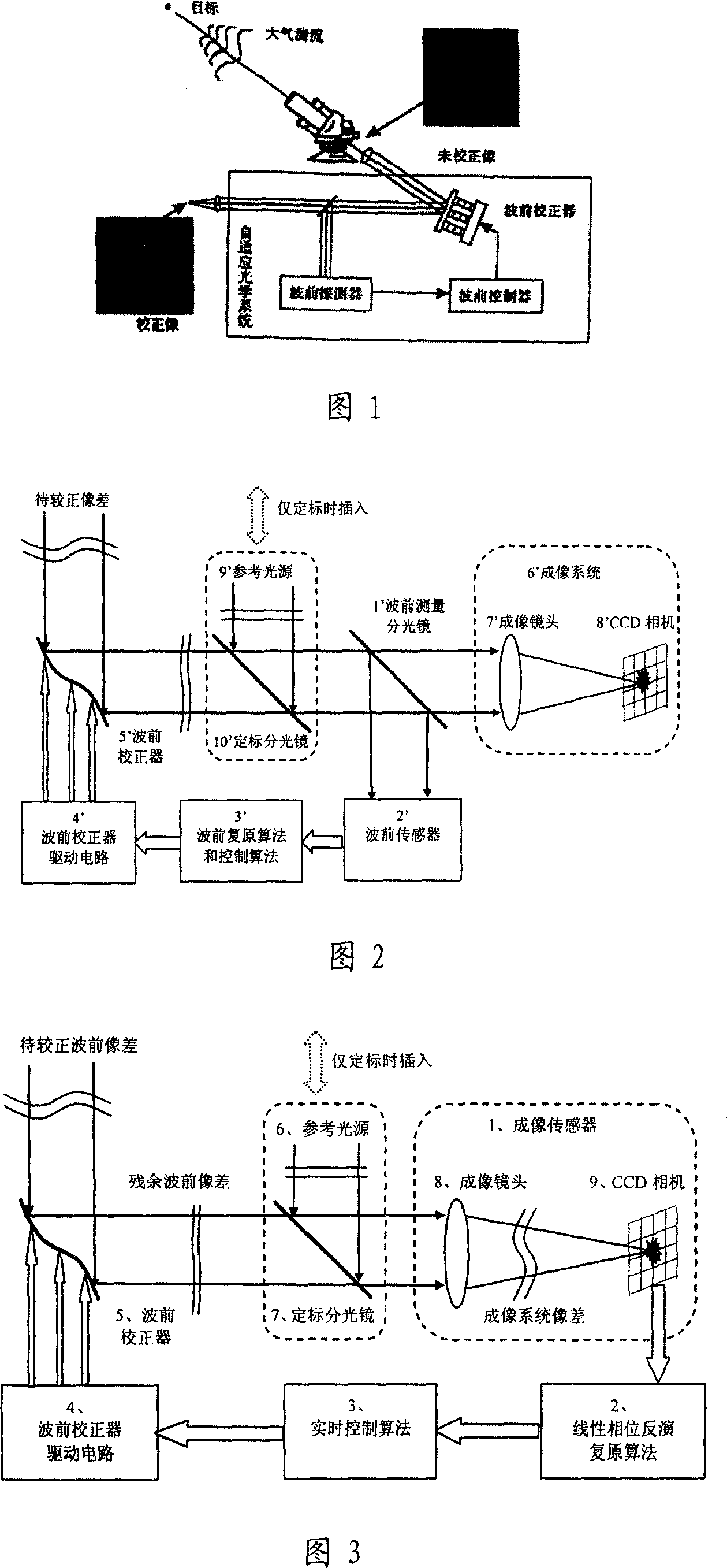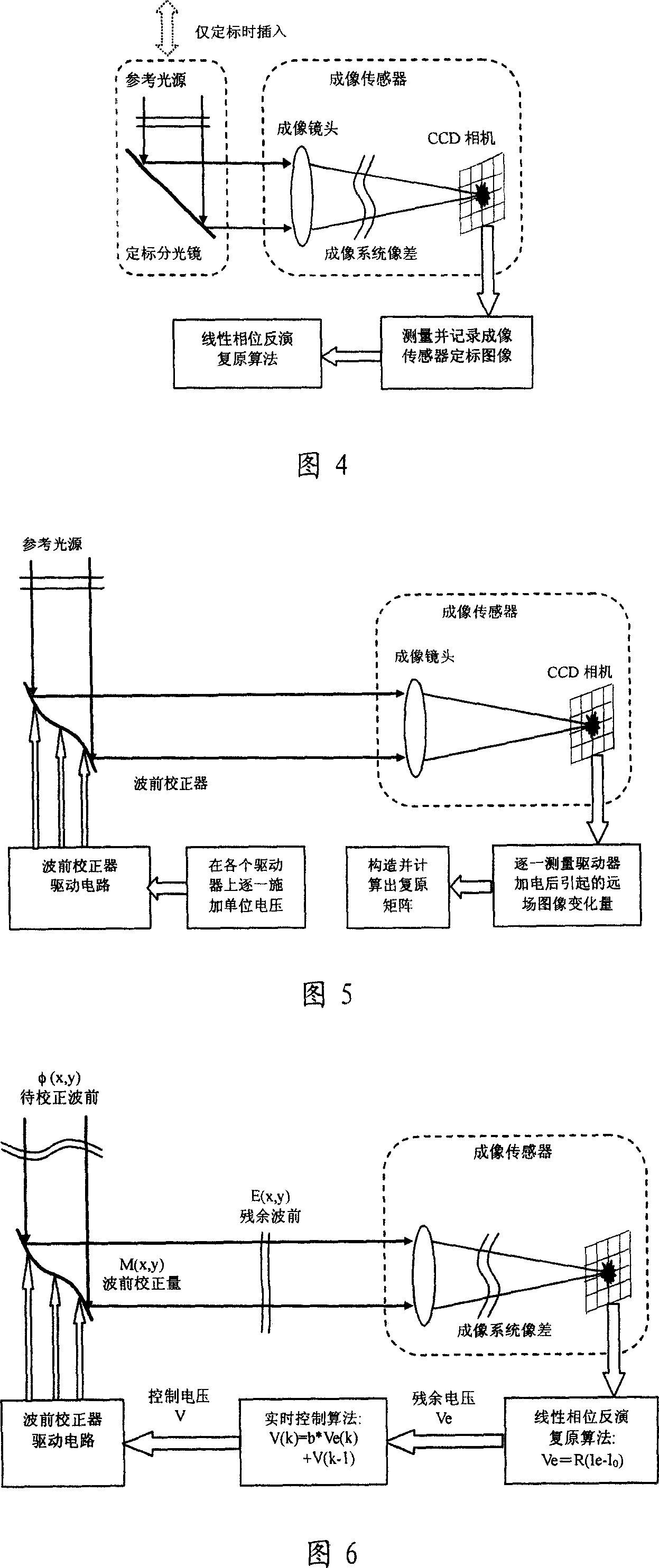Self-adaptive optical system based on linear phase inversion restoration technology
A technology of adaptive optics and linear phase, applied in the field of optics, it can solve the problems of complex algorithm and large amount of calculation.
- Summary
- Abstract
- Description
- Claims
- Application Information
AI Technical Summary
Problems solved by technology
Method used
Image
Examples
Embodiment Construction
[0052] As shown in Figure 3, an adaptive optics system based on linear phase inversion restoration technology consists of an imaging sensor 1, a linear phase inversion restoration algorithm 2, a real-time control algorithm 3, a wavefront corrector 5 and its driving circuit 4, and a reference light source 6. The calibration beamsplitter 7 is formed, wherein the imaging sensor is composed of a lens 8 and a CCD camera 9. First, the calibration beamsplitter 7 is used to insert the ideal reference light source 6 into the optical path in front of the imaging sensor 1, and the imaging sensor 1 is calibrated and obtained. After the calibration is completed, the reference light source 6 and the calibration beamsplitter 7 are removed. When the adaptive optics system is working, the far-field image of the residual aberration after the wavefront aberration to be corrected is compensated by the wavefront corrector 5 is measured by the imaging sensor 1 in real time, and the obtained image is...
PUM
 Login to View More
Login to View More Abstract
Description
Claims
Application Information
 Login to View More
Login to View More - R&D
- Intellectual Property
- Life Sciences
- Materials
- Tech Scout
- Unparalleled Data Quality
- Higher Quality Content
- 60% Fewer Hallucinations
Browse by: Latest US Patents, China's latest patents, Technical Efficacy Thesaurus, Application Domain, Technology Topic, Popular Technical Reports.
© 2025 PatSnap. All rights reserved.Legal|Privacy policy|Modern Slavery Act Transparency Statement|Sitemap|About US| Contact US: help@patsnap.com



